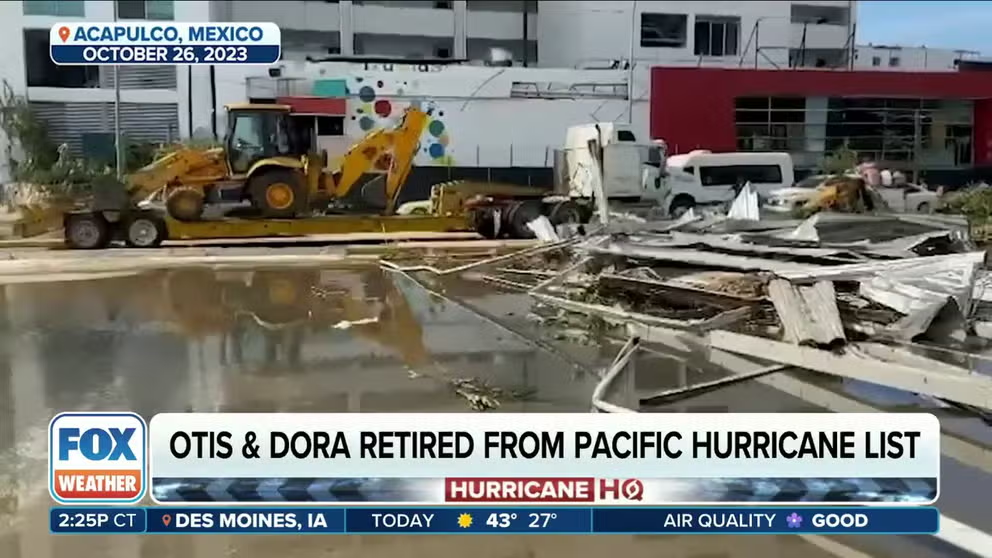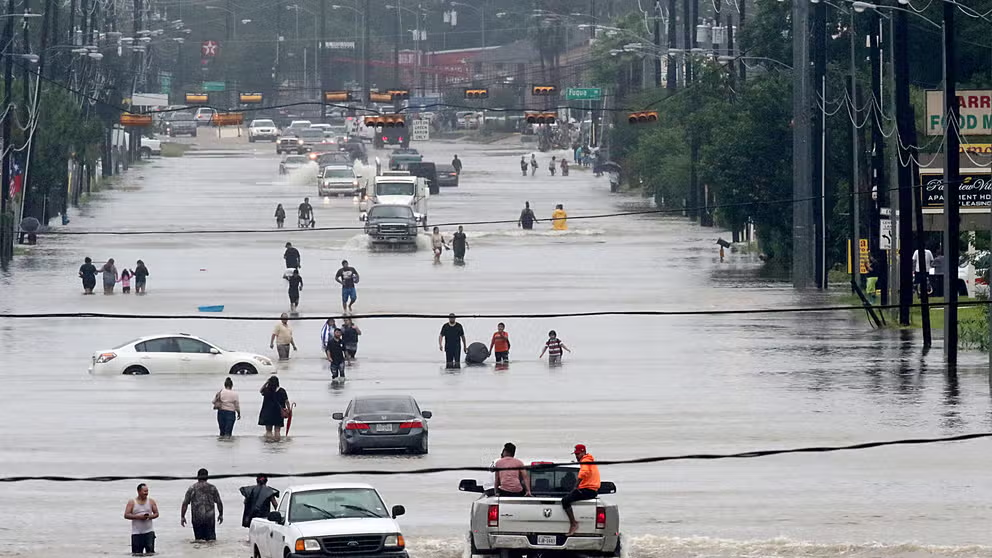What is a Category 4 hurricane?
According to NOAA, well-built homes can sustain severe damage, with the complete demise of mobile homes. Most trees will be snapped or uprooted and land on streets and power lines. Along the coast, a storm surge of 13-18 feet can be anticipated. Communities that are impacted by the eyewall can be uninhabitable for weeks. Hurricanes Ian (2022), Ida (2021), Harvey (2017) and Irma (2017) were Category 4 cyclones when they made landfall in the United States.
Hurricane names Dora and Otis retired
The WMO voted to retire North Eastern Pacific hurricane names Dora and Otis. For the first time since 2014, the committee did not retire any Atlantic names.
A hurricane with maximum sustained winds of 130-156 mph is considered to be a Category 4 cyclone on the Saffir-Simpson Hurricane Wind Scale.
A Category 4 cyclone is considered to be a major hurricane and is only one class below a Category 5.
The scale does not take into account flooding, erosion, tornadoes or storm surge that are known to be deadly during a Category 5 hurricane.
According to NOAA, well-built homes can sustain severe damage, with the complete demise of mobile homes. Most trees will be snapped, with downed vegetation causing significant damage to power lines.
Power outages in the worst impacted communities could last months, as some neighborhoods are uninhabitable.
Along the coast, a Category 4 hurricane can produce a storm surge from 4 to 5 feet. This rise in water level can cause localized erosion and flood low-lying areas.
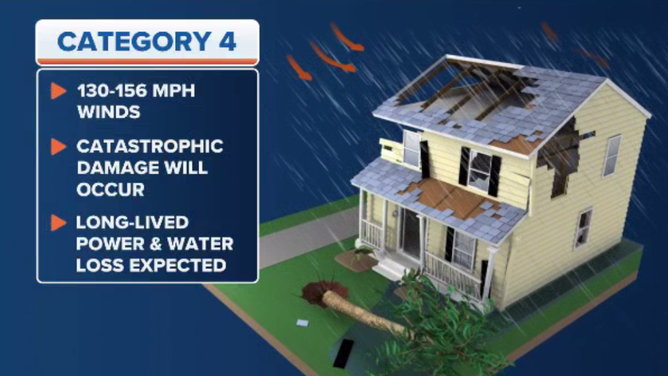
Category 4 hurricane explainer
(FOX Weather)
7 FACTS TO KNOW ABOUT HURRICANES
Prior to the arrival of a storm, extensive population centers are put under mandatory evacuations, which can take days to complete.
After the passage of a Category 4 hurricane, clean-up of debris may take several months.
Once sustained winds are greater than 156 mph, a hurricane is considered to be a Category 5 on the Saffir-Simpson scale.
Due to the warm water and atmospheric conditions that are needed to support Category 4 storms, the majority occur in September and October.
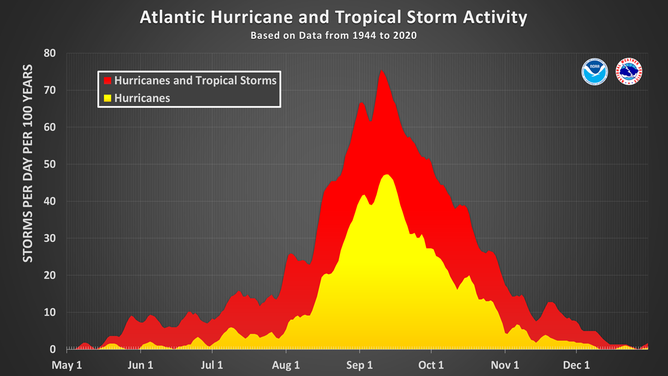
This chart shows the amount of tropical cyclone activity, in terms of named storms and hurricanes, that occurs in the Atlantic Basin on each calendar day between May 1 and Dec. 31.
(National Hurricane Center / NOAA)
Memorable Category 4 strikes on the U.S.
Hurricane Ian (150 mph) – 2022
- Landfall location: Cayo Costa, Florida
- U.S. damage: $112 Billion
- The combination of Ian’s damaging winds, storm surge and heavy rainfall caused widespread damage across Central Florida. Despite nearly a week of warnings about the system, Ian became the deadliest hurricane to strike the mainland since Hurricane Katrina in 2005. NOAA received reports that at least 156 people were killed throughout the Southeast.
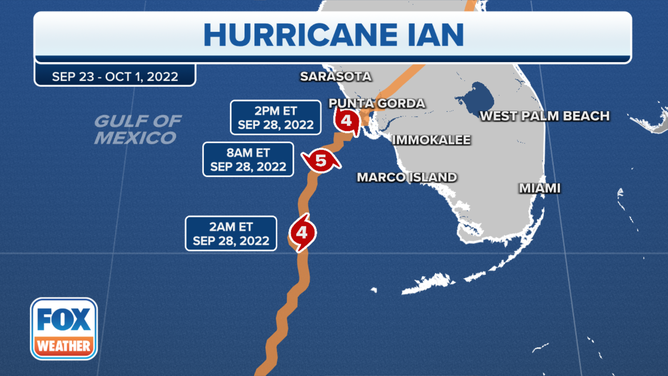
The track and intensity of Hurricane Ian in September 2022.
(FOX Weather)
Hurricane Ida (150 mph) - 2021
- Landfall location: Port Fourchon, Louisiana
- U.S. damage: $74 billion
- Damage from Hurricane Ida stretched from the Gulf Coast through New England, with widespread flooding reported in many communities. Due to Ida being a high-end Category 4, it was the second-most costly hurricane to strike Louisiana, only behind Hurricane Katrina. Northeast cities reported upwards of 10" of rain, and the National Weather Service office that covers New York City issued the area’s first Flash Flood Emergency.
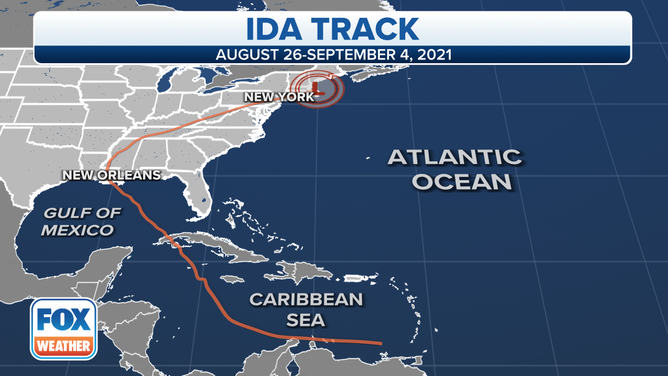
Hurricane Ida formed on Aug. 26, 2021, in the Caribbean Sea and made landfall in southeastern Louisiana on Aug. 29 as a Category 4 hurricane.
(FOX Weather)
Hurricane Harvey (130 mph) – 2017
- Landfall location: Rockport, Texas
- U.S. damage: $125 billion
- Hurricane Harvey made landfall around 160 miles south of Houston, but most of the damage was centered in East Texas. Once the cyclone made landfall, the steering patterns collapsed, resulting in catastrophic flooding that lasted for over four days. Nederland, Texas, reported a rainfall total of 60.58", making Harvey the wettest hurricane in U.S. history.
Remembering Hurricane Harvey 5 years later
It's been five years since Hurricane Harvey wreaked havoc on Texas. After making landfall, the storm stalled in the Houston area for four days unleashing relentless rain causing catastrophic flooding. FOX Weather's Britta Merwin has a look back at Harvey's devastation and how the city and surrounding areas have recovered.
Hurricane Irma (130 mph) – 2017
- Landfall location: Cudjoe Key, Florida
- U.S. damage: $50 billion
- Irma was a long-lived Cabo Verde hurricane that caused hurricane conditions throughout the Florida Peninsula. Irma was the first Category 4 hurricane to make landfall in the Sunshine State since Charley (2004). NOAA estimated that nearly 100 people were either directly or indirectly killed by the large storm in the U.S.
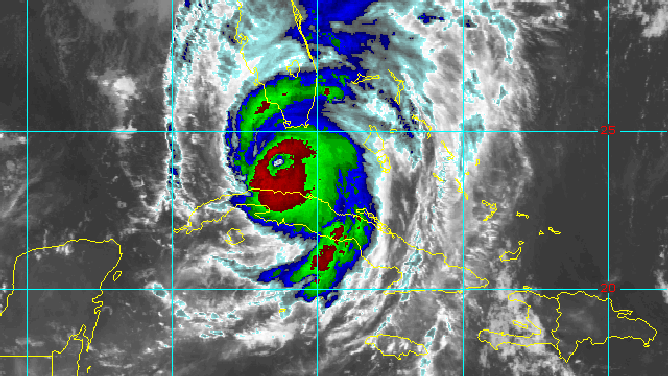
Hurricane Irma satellite loop from Sept. 10, 2017
(NOAA)
